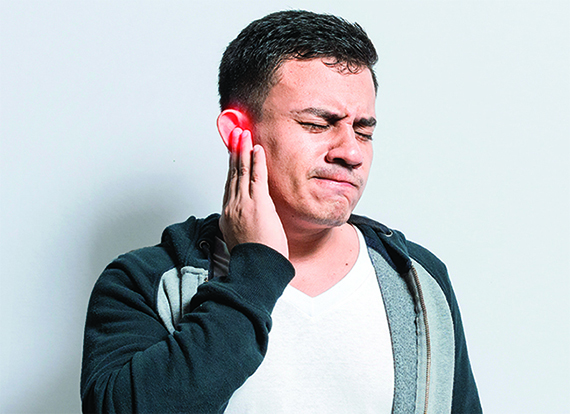Managing noise sensitivity in clients with post-concussion syndrome
The Centers for Disease Control and Prevention (CDC) estimates that 1.4 to 3.8 million concussions occur annually in the United States (Laker, 2011). A concussion is a mild traumatic brain injury (mTBI) caused by a “bump, blow, or jolt to the head or by a hit to the body that causes the head and brain to move rapidly back and forth” (CDC, 2019, para. 1). The effects can lead to sustained residual symptoms called post-concussion syndrome (PCS), which is defined as “a syndrome that occurs following head trauma including a number of disparate symptoms such as headache, dizziness, fatigue, irritability, difficulty in concentration and performing mental tasks, impairment of memory, insomnia, and reduced tolerance to stress, emotional excitement, or alcohol” (World Health Organization [WHO], 2019, F07.2). The frequency and duration of symptoms following a diagnosis of PCS vary and may include headache, fatigue, dizziness, irritability, sleep disturbance, reduced concentration, impaired memory, sensitivity to light and noise, slowed thinking, and anxiety (Jaber et al., 2019).

In addition to these symptoms, Shepherd and colleagues (2020) found that 59% of mTBI survivors experience some level of noise sensitivity (NS), and nearly half experience aural symptoms beyond six years (Knoll et al., 2020). While NS and the term hyperacusis are often used interchangeably in the PCS and mTBI literature (Aazh et al., 2018), NS is a discomfort response, while hyperacusis is a pain response to these same auditory stimuli (Henry et al., 2022). In addition, tinnitus, or an endless ringing or buzzing sound, is common (Henry, 2022; Knoll et al., 2020).
Although recovery is unique to the individual and different for every client (Thielen et al., 2022), some studies have found that NS is more common and slower to improve than visual sensitivity (Shepherd et al., 2020). A systematic review by Thielen and colleagues (2022) found a positive correlation between NS and mental health diagnoses, including depression, anxiety, and posttraumatic stress disorder (PTSD). The impact on function includes increased rehospitalizations, a delayed return to driving, and decreased sleep quality (Thielen et al., 2022), as well as withdrawal from family events and usual community activities such as attending religious services (Landon et al., 2012).
